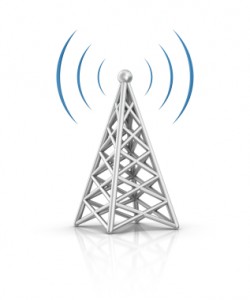Self-Monitoring Wireless Clocks – Wouldn’t That Be Nice?
Wireless clock technology has seemed to find its way into many hospitals, schools, manufacturing plants, corporate facilities all over. These clocks don’t cost much, but they perform the task just as well or better than any wired synchronized clock solution out there. Due to their ability to be powered by batteries and corrected for accurate time through wireless signals, a wireless clock system will not accrue the expense common with other systems. This has generally made them the practical solution for any facility looking to implement synchronized time into their building. However, just like any synchronized clock, there are some pitfalls to the system, such as having to change the batteries when they run out of life—an especially irritating task when your clock’s battery life isn’t upwards of five to eight years. Additionally, when the user wants to stay proactive on the battery levels of their wireless clocks, they may manually check every clock in their building periodically—a hassle almost not worth the effort.
But think, what if your wireless clocks could monitor themselves? I’m not saying they could change their own batteries, but what if they could report information back to the user? Things like the battery life, as well as mechanical failures and the last time the clock synchronized could also be worth knowing if the clock could somehow relay each bit of information back to the user’s computer. If the batteries in one clock were close to expiration, the user would know from their computer beforehand and make the change. If a clock missed one or two time synchronizations out of the day, the user could take note and service the clock. Basically, becoming proactive with the maintenance of your clock system would become effortless.
With wireless clocks that report their status back to the user’s computer, the days of manually walking around to each clock to check battery life and mechanical status are over. Also, all the times that the facility manager of the building is contacted by an employee or guest because a clock stopped working due to dead batteries are in the past. These clocks and all their information would all be displayed on the user’s computer in a convenient, easy-to-use interface. All problems will be noticed before they get a chance to actually occur—allowing the user to be completely proactive with the maintenance of the system.
As great as this all may sound, it probably sounds a bit idealistic as well. Having this capability and all the benefits that come with it might seem out of reach. However, if this capability does eventually reach fruition, users will be able to increase efficiency in regards to maintaining their clock system—an ability long sought after, but where solutions are not readily available. As clock technology continues to expand, the increase in benefits for the user follows, so stay tuned for updates in the industry and maybe someday soon you’ll have this kind of capability in your wireless clock system.

